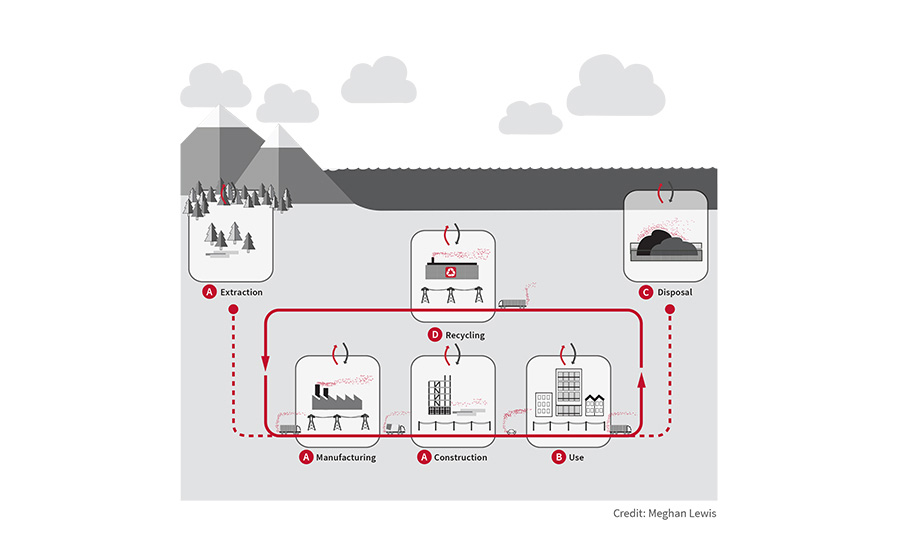Reducing Embodied Carbon and Operational Emissions in Buildings

Last week, at the Global Climate Action Summit in San Francisco, Microsoft announced it is the first large corporate user of a new tool to track the carbon emissions of raw building materials. Microsoft is piloting the tool, called the Embodied Carbon Calculator for Construction, or EC3, in the remodel of its 72-acre Seattle campus.
The open-source EC3, which is running on Microsoft Azure, was developed by Skanska with the University of Washington Carbon Leadership Forum, Interface and C-Change Labs. Skanska is purposely carving out embodied carbon in materials in construction—from the cradle to the grave—because it is manageable, said Stacy Smedley, director of sustainability for Skanska USA Building Inc., at the Carbon Smart Building Day, held on Sept. 11 in advance of the summit and attended by more than 300 people in the buildings sector.
“Benchmarking and understanding data is important” but existing calculators have different baseline data, which is not necessarily open source, so using them results in different numbers, added Smedley. EC3 is not only open source, it is free for all to use.
Operational Carbon Emissions
In addition, at the Sept. 12-14 summit, the World Green Building Council (WorldGBC) launched its Net Zero Carbon Buildings Commitment. The 38 initial signatories include 12 businesses, 22 cities and four states and regions. The member businesses, which represent nearly $23 billion in revenue in building and construction supply chain, are pledging to eliminate operational carbon emissions from their business portfolios of more than 10.7 million square meters by 2030. WorldGBC expects this to trigger a wider market transformation to enable net-zero carbon buildings by 2050, said Victoria Kate Burrows, head of advancing net zero for the WorldGBC.
The commitment also represents a pledge by the leaders of member municipalities to enact regulations and/or planning policies that would require all new buildings within their jurisdictions to operate at net-zero carbon by 2050. Some public-sector signatories have made a commitment to get to net-zero carbon operations of buildings they own, operate and develop by 2030.
Ed Mazria, founder of Architecture 2030, introduced the Carbon Smart Materials Palette, which contains an attribute-based approach to embodied carbon reductions in the built environment. The palette identifies key attributes that contribute to a material’s embodied carbon impact, and offers guidelines and options for emissions reductions.
Annually, embodied carbon is responsible for 11% of global GHG emissions and 28% of global building sector emissions, said Mazria. “As we trend toward zero operational emissions, the impact of embodied emissions becomes increasingly significant,” he added.
On the building operations side, regarding carbon emissions, Architecture 2030 has set a goal of a decarbonized buildings sector by 2050. Toward that goal, policymakers must embrace a standard for all buildings: new and existing, large and small, and appropriate for any location including dense urban areas where most of the U.S. and global construction will take place over the next two decades, said Mazria. A Zero Net Carbon (ZNC) building is defined as a highly energy-efficient building that produces on-site, or procures, enough carbon-free renewable energy to meet building operations energy consumption annually.